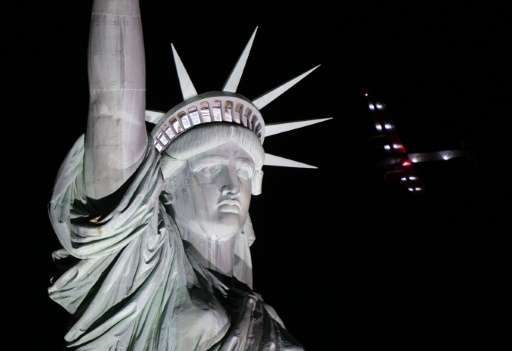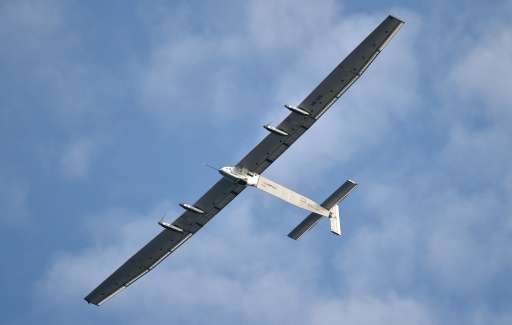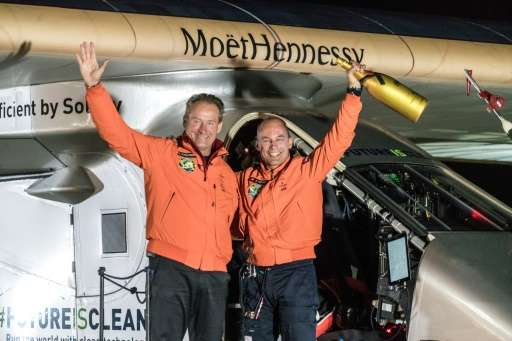Sun-powered Solar Impulse 2 aircraft reaches Statue of Liberty

The Solar Impulse 2 aircraft flew by the Statue of Liberty early Saturday, ending the US portion of its bid to circle the globe using only solar power.
"It's absolutely incredible," Swiss pilot Andre Borschberg said over a live video feed as the iconic statue lit up the night below him. "It's a dream here."
The light, slow-moving aircraft later landed at New York's Kennedy Airport, completing the five hour flight from Lehigh Valley Airport in Pennsylvania.
Cameras in a boat in New York harbor captured the innovative solar powered aircraft as it flew over the Verrazano Bridge and headed toward the towering Lady Liberty.
It circled the statue and cruised along the Manhattan skyline before turning back south for the landing at Kennedy, one minute ahead of schedule at 3:59 am (0759 GMT).
Ending the US crossing at the Statue of Liberty "is a very strong moment for me", said Borschberg as he approached New York, calling it a "symbol of the freedom of enterprise, the freedom to innovate."
It was the 14th leg of an east-west journey that began March 9, 2015 in Abu Dhabi, and has taken the aircraft across Asia and the Pacific to the United States.
From New York the Solar Impulse team will attempt to cross the Atlantic to Europe and on to the Middle East.

Borschberg has alternated with fellow Swiss pilot Bertrand Piccard, a doctor who made the first non-stop balloon flight around the world in 1999.
Their goal is to be the first to circumnavigate the Earth with the sun as their aircraft's only source of power.
The single-seat aircraft, which has the wingspan of a Boeing 747, is clad in 17,000 solar cells. During night flights like the one from Pennsylvania to New York, it runs on battery-stored power.
It typically travels at a mere 30 miles (48 kilometers) per hour, although its flight speed can double when exposed to full sunlight.
Borschberg skimmed over Pennsylvania at an altitude of less than 3,000 feet (900 meters), descending to 1,500 feet (500 meters) as the plane crossed over the bays at the entrance to New York harbor.
Borschberg, who fielded phone calls from well-wishers and journalists during the flight, told one interviewer he could see the light grow denser and denser as he crossed out of Pennsylvania in the approach to New York.

The Swiss businessman was at the controls of Solar Impulse 2 on its most difficult segment of the trip, a 4,000-mile, 118-hour endurance run from Nagoya, Japan to Hawaii.
High tropical temperatures damaged the plane's batteries, forcing its crew to take several months off to make repairs.
Borschberg is no stranger to adventure—15 years ago he narrowly escaped an avalanche, and in 2013 he survived a helicopter crash with just minor injuries.
© 2016 AFP




















